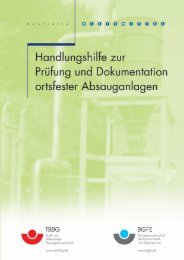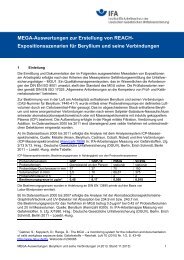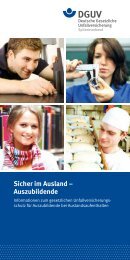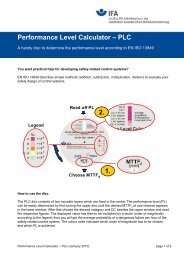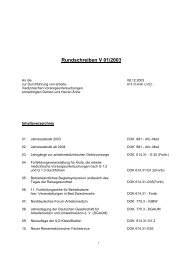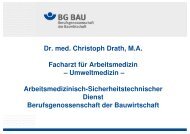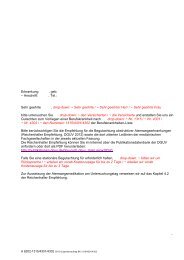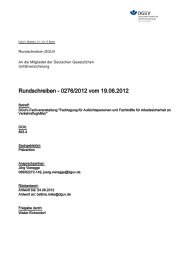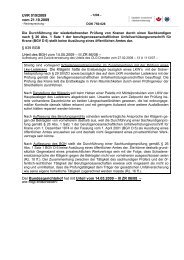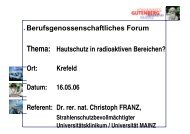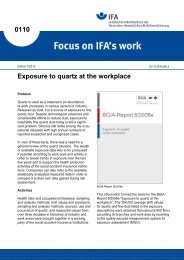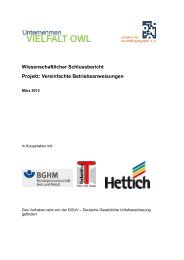Effectiveness of measures to prevent needlestick injuries among ...
Effectiveness of measures to prevent needlestick injuries among ...
Effectiveness of measures to prevent needlestick injuries among ...
Create successful ePaper yourself
Turn your PDF publications into a flip-book with our unique Google optimized e-Paper software.
5 Cost effectiveness<br />
Both costs and benefits might affect more than one entity (e.g. health care provider,<br />
health insurance, social security system), so interpretation <strong>of</strong> the results <strong>of</strong> cost-benefit<br />
analyses depends on the unit <strong>of</strong> analysis used in the calculations (hospital or societal<br />
level, and specific national health system).<br />
5.1 Estimated costs <strong>of</strong> NSI<br />
There is a broad range <strong>of</strong> costs <strong>of</strong> NSI reported in the literature (see examples in Table<br />
13, see page 99). A recent report <strong>of</strong> the US General Accounting Office describes a<br />
range <strong>of</strong> estimated average costs per NSI between $ 500 and $ 3,000 [22]. Several<br />
fac<strong>to</strong>rs contribute <strong>to</strong> these differences, making valid comparisons difficult.<br />
First, analysts include different fac<strong>to</strong>rs in their analyses, and hospitals calculate costs<br />
differently. This is especially true for indirect costs. For example Jagger et al. [101]<br />
estimated costs <strong>of</strong> NSI for two US hospitals for the time period 1995 <strong>to</strong> 1997, based<br />
on the data recorded in the EPINet. Both hospitals were large. One was located in a<br />
high-HIV prevalence area, the other one in a low-HIV prevalence area. Even though<br />
the recorded average costs <strong>of</strong> NSI in both hospitals were similar (US $ 672 vs. US $<br />
539), Jagger et al. found remarkable differences in the way the hospitals calculated<br />
overall costs. For example, one hospital included the cost <strong>of</strong> lost work time, the other<br />
did not; the costs for testing were very different between hospitals. The costs associated<br />
with seroconversion were not considered.<br />
Second, both direct and indirect cost estimates depend on characteristics that differ<br />
between hospitals, including HBV vaccination status <strong>of</strong> the HCW, the status <strong>of</strong> the<br />
patient population with respect <strong>to</strong> BBP, and the specific institutional pro<strong>to</strong>cols for<br />
evaluation, treatment and follow-up after NSI [97; 98]. A low risk, low cost situation<br />
arises when the source patient was known <strong>to</strong> be negative for BBP. A high risk, high<br />
cost situation, e.g. if the source patient was HIV positive, may increase costs by a<br />
fac<strong>to</strong>r between 3 <strong>to</strong> 10 [19; 33; 81; 97; 101; 103].<br />
Finally, any cost estimates are strongly time-dependent in a double sense: Early<br />
estimates [78] did not include any testing or PEP for HCV or HIV [98]; the latter has<br />
accounted for the larges increase in NSI costs over the last decade [19]. Cost estimates<br />
are also time-dependent in that the value <strong>of</strong> money changes over time. Even if<br />
Report „Needlestick <strong>injuries</strong>“ 60



